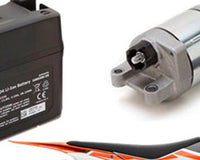Prismatic and Cylindrical cells are two materials that are used to build lithium batteries.
In a nutshell, Cylindrical cells are cylindrical in shape and use up more space. They are the most commonly used cell type due to their lower cost. These are often used in laptop batteries and even EVs.
Prismatic cells, on the other hand, are designed are thin and light. They can use either steel or aluminum casing, which makes them more stable. Unfortunately, this means they are more expensive to manufacture. These are often used in smaller batteries such as phone and tablet batteries.
Both cell types have their advantages and disadvantages to manufacturing and use.
Cylindrical cells can provide a better automation process and techniques that increase consistency and can handle high internal pressures without deforming. They can be produced at a much faster rate and are much cheaper than prismatic cells. They also have better temperature control than prismatic cells. Their main downfall is that they use up more space.
Prismatic cells, on the other hand, are lighter designed to conserve space. This makes it easy to connect four cells together and create a 12V battery pack . While being costlier, their thinner layering and rectangular shape mean that the product designer has more choice. They aren’t without their disadvantages. If one prismatic cell fails, the whole battery pack will be affected.
Cylindrical cells are the preferred cell by most manufacturers due to their lower cost, but prismatic cells are great if space is your concern. Luckily, the technology surrounding prismatic cells is improving due to the demand for smaller batteries.
If you want to learn everything you ever wanted to know about batteries, click here to access our blogs









